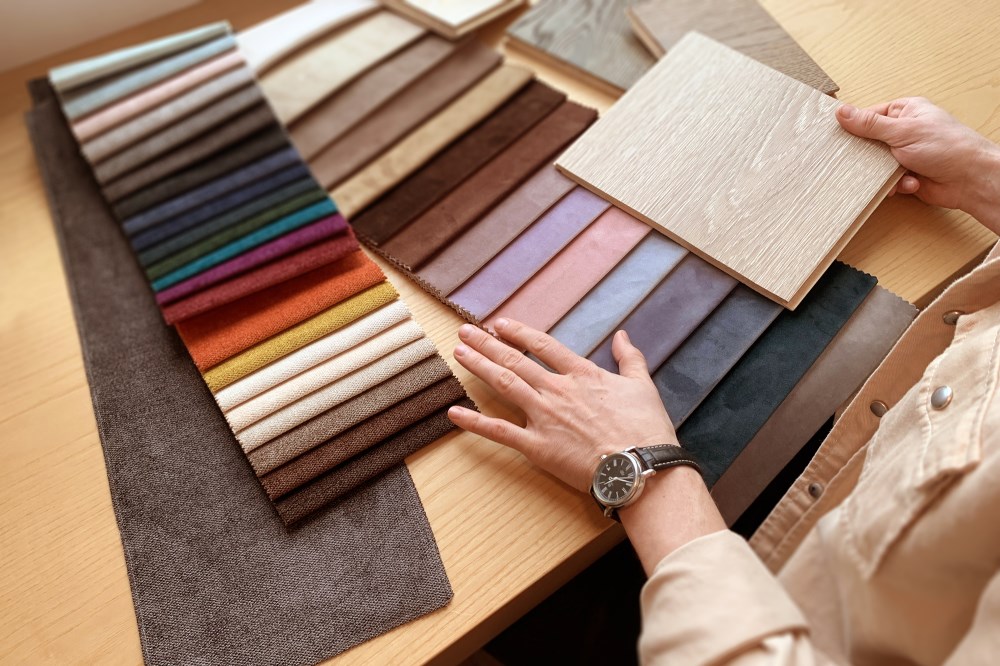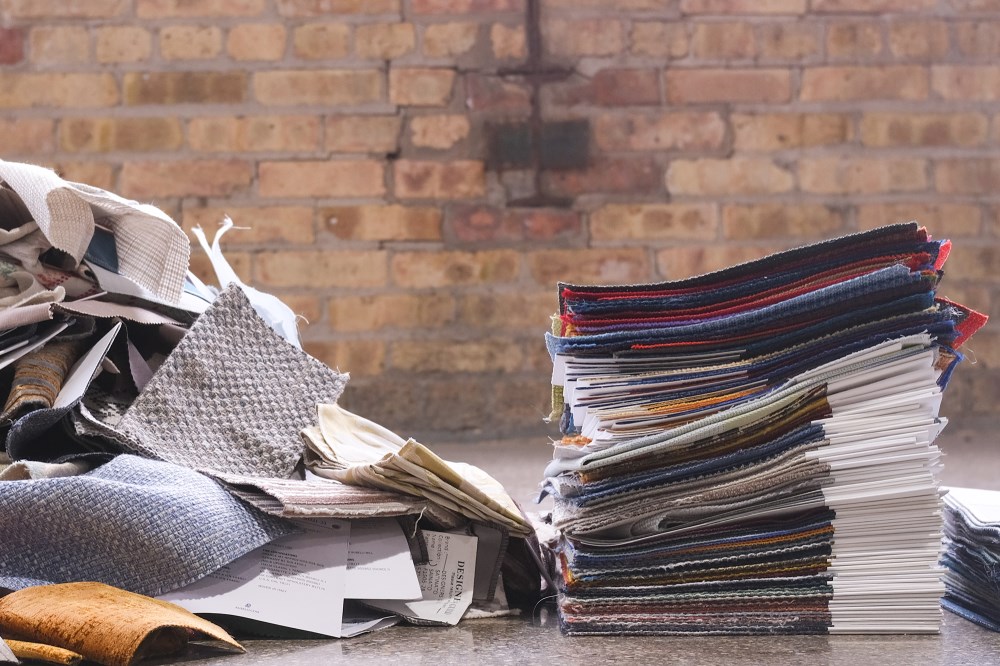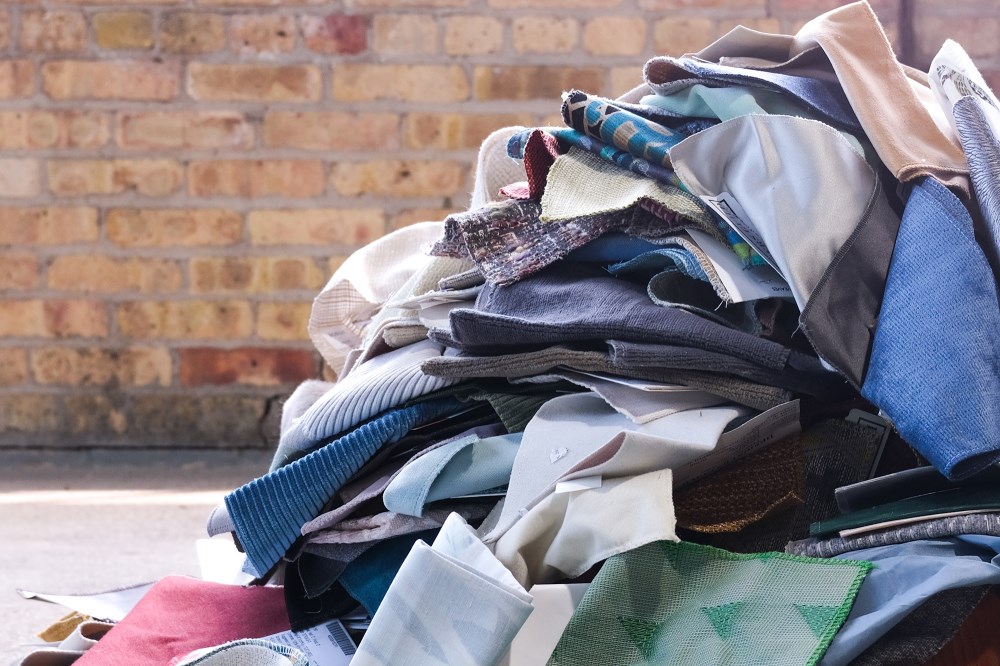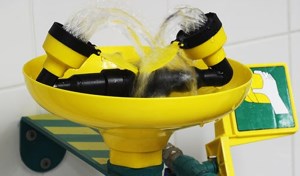Every project leaves a trace. Floorplans, memories, and the quiet stacks of samples that shaped every choice along the way. Once the work wraps up, those samples sit in drawers and boxes, waiting for purpose. Some are carefully labeled, others long forgotten. Most will eventually be thrown out.
It’s a familiar scene across design studios everywhere. As sustainability becomes a central part of design practice, the question of what happens to those materials is starting to matter more.
The Scale of the Problem
A mid-sized commercial project might involve evaluating hundreds of material samples across flooring, wall finishes, fabrics, furniture, hardware, and fixtures. Even with rigorous curation, dozens of physical samples per project is typical. Multiply that across all the projects a firm handles in a year. Then multiply that across all the design practices in the industry. The volume becomes staggering.
The environmental impact compounds at every stage:
• raw materials extracted and processed
• energy used in manufacturing
• packaging materials for shipping
• emissions from transportation
• landfill space when disposed
All for materials that might spend a few weeks on a designer's desk before being thrown away.

Why Returning Samples Is Harder Than It Sounds
The obvious solution would be to return samples to manufacturers after projects end. And conscientious designers do try this.
Interior designer Naomi Wheeler describes the reality: "Depending on how heavy my workload was, I would actually spend maybe two hours just firing out emails to the sales reps and just saying: you know, we've got a box of whatever tiles or fabrics or whatever, would you mind popping by and collecting them for us?"
Two hours might not sound like much. But she goes on to detail what's actually involved: "Probably a day sorting them into piles for different manufacturers, and then you've got to sit and email them and arrange a day, and they're not all going to turn up on the same day and collect it all."
This means a full day of work with sorting, organizing, contacting multiple companies, and coordinating collection schedules. For a busy design practice, that's a significant cost. Even then, manufacturer collection isn't guaranteed. Not all companies have reverse logistics set up. Some are enthusiastic about taking samples back. Others are indifferent or simply don't respond. The inconsistency makes the whole process unreliable.

Disposal becomes the default. Not because designers don't care, but because the system makes caring prohibitively expensive in time and effort. Designers are creative professionals who tend to care deeply about aesthetics, quality, and increasingly, environmental impact. Many went into design partly because they want to create beautiful, thoughtful spaces that improve people's lives. Throwing materials in the trash runs counter to those values.
The First Fully Circular Solution
What's been missing is a systemic approach. Something that treats sample circularity not as an afterthought but as a fundamental part of how sampling works. That is what Second Life Samples® was designed to address. As the first fully circular sampling program for the AEC industry, it gives designers a practical, sustainable way to manage material libraries while cutting waste and lowering their carbon footprint.
The program builds on Swatchbox's original return service, which has offered free returns for samples ordered through the platform since 2018. Second Life Samples expands this significantly. Any complete and undamaged samples are accepted, regardless of where they originally came from. Designers are no longer limited to returning only samples ordered through one platform. The entire contents of a material library can now enter the circular system.
How It Works
The process is deliberately simple. Participating firms schedule a pickup with Swatchbox. No sorting required. No separating by manufacturer. No preparing individual boxes for different companies. Just schedule the collection. A courier picks up 100 percent of the unwanted samples in one step.

Returned samples are inspected, analyzed, and graded through a proprietary process that includes an AI-powered visual engine. The process assesses each sample's condition and assigns identifying information such as brand name, product line, and SKU. Once processed, samples are assigned metadata and listed back on the Swatchbox platform for other architects and designers to order.
What Happens to Samples That Can't Be Reused
Even the most thoughtful system can't make every sample reusable, but Swatchbox Second Life Samples has a purpose for these materials too. Samples that are no longer actively sold by manufacturers or no longer have clear identification are offered to students and educators for use in design programs and studios. These materials are perfect for learning, experimentation, and exploration. Damaged or incomplete samples are processed through the most responsible recycling streams available. The aim is to ensure that even materials that can't continue as samples are handled as sustainably as possible.
To date, more than 90 percent of materials collected through the program have been suitable for reuse. This remarkable reality speaks to both the quality of samples in circulation and the thoroughness of the evaluation process.
How to Get Involved
Firms interested in participating can become Swatchbox Firm Partners, gaining access to on-demand pickups and the tools to streamline their sample library while reducing waste.
Meanwhile, designers who order samples through Swatchbox can now explore listings labeled Second Life Samples, offering a more sustainable option for sourcing. These samples have been professionally inspected, properly identified, and are ready to serve their next project.
For many materials, there's no meaningful difference between a sample that's served one project and a new sample from the manufacturer. Both are complete, undamaged, and perfectly suited for evaluation. The only difference is the environmental impact.
“Being able to return samples easily keeps our shelves from overflowing. It’s a small thing, but it makes a big difference in how we work," says Naomi Wheeler.

Circularity in design doesn’t have to be complicated. It just needs to be built in. With Second Life Samples, returning, reusing, and reimagining materials is finally as easy as ordering them. It’s one more way design professionals can align daily practice with long-term values.
Click here to learn more or become a Swatchbox Firm Partner.
--
 Swatchbox is a premier sample fulfillment service for building product manufacturers. With proprietary software designed by insiders of the design community, Swatchbox helps manufacturers improve product sales and brand affinity by delivering material samples to the design community with speed, intelligence, and style. Learn more and join Swatchbox at www.swatchbox.com.
Swatchbox is a premier sample fulfillment service for building product manufacturers. With proprietary software designed by insiders of the design community, Swatchbox helps manufacturers improve product sales and brand affinity by delivering material samples to the design community with speed, intelligence, and style. Learn more and join Swatchbox at www.swatchbox.com.



 Swatchbox
Swatchbox











